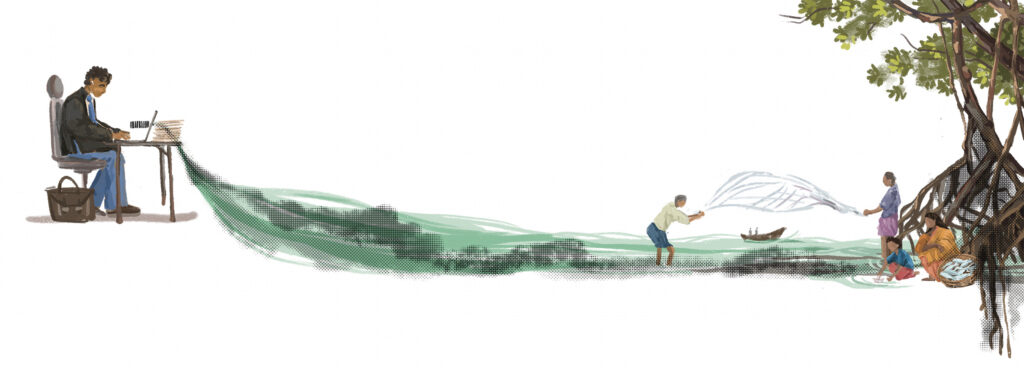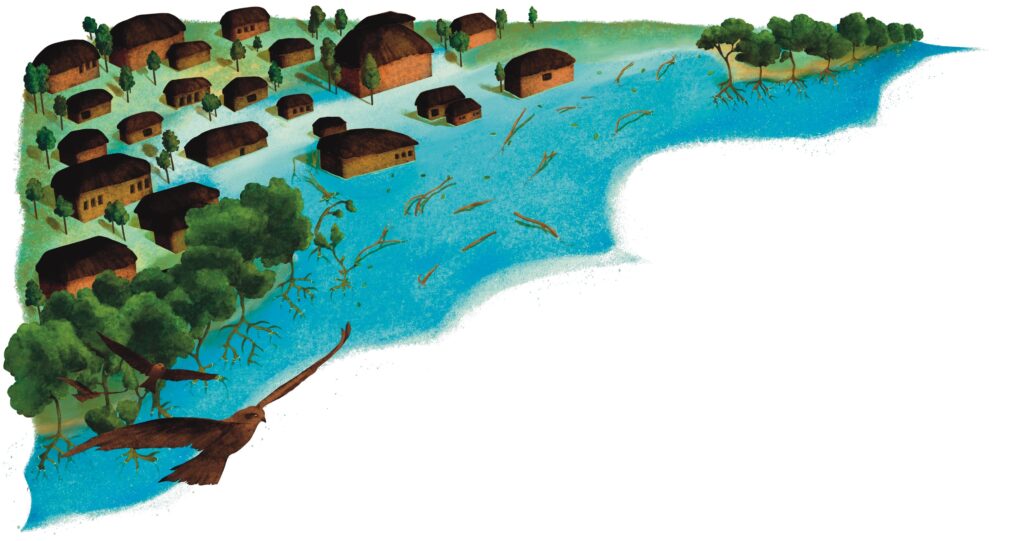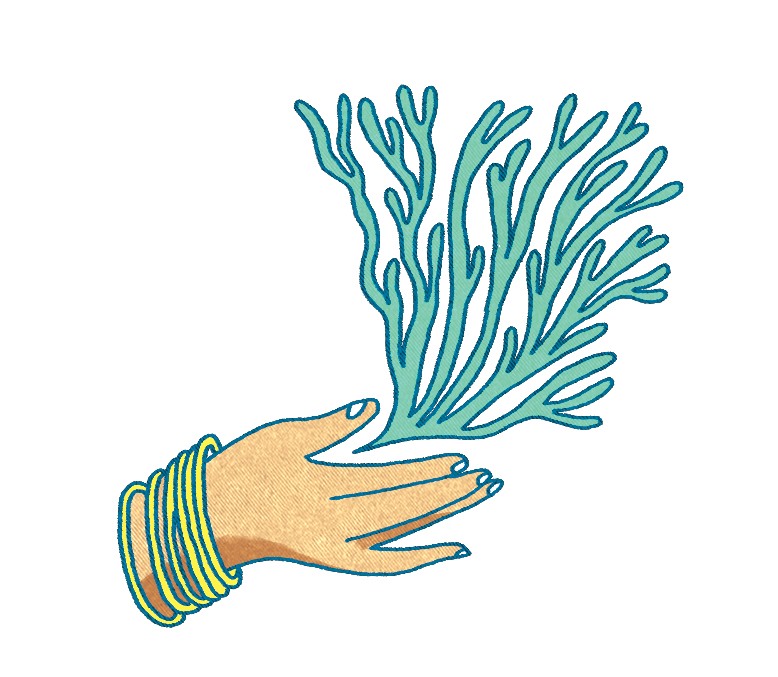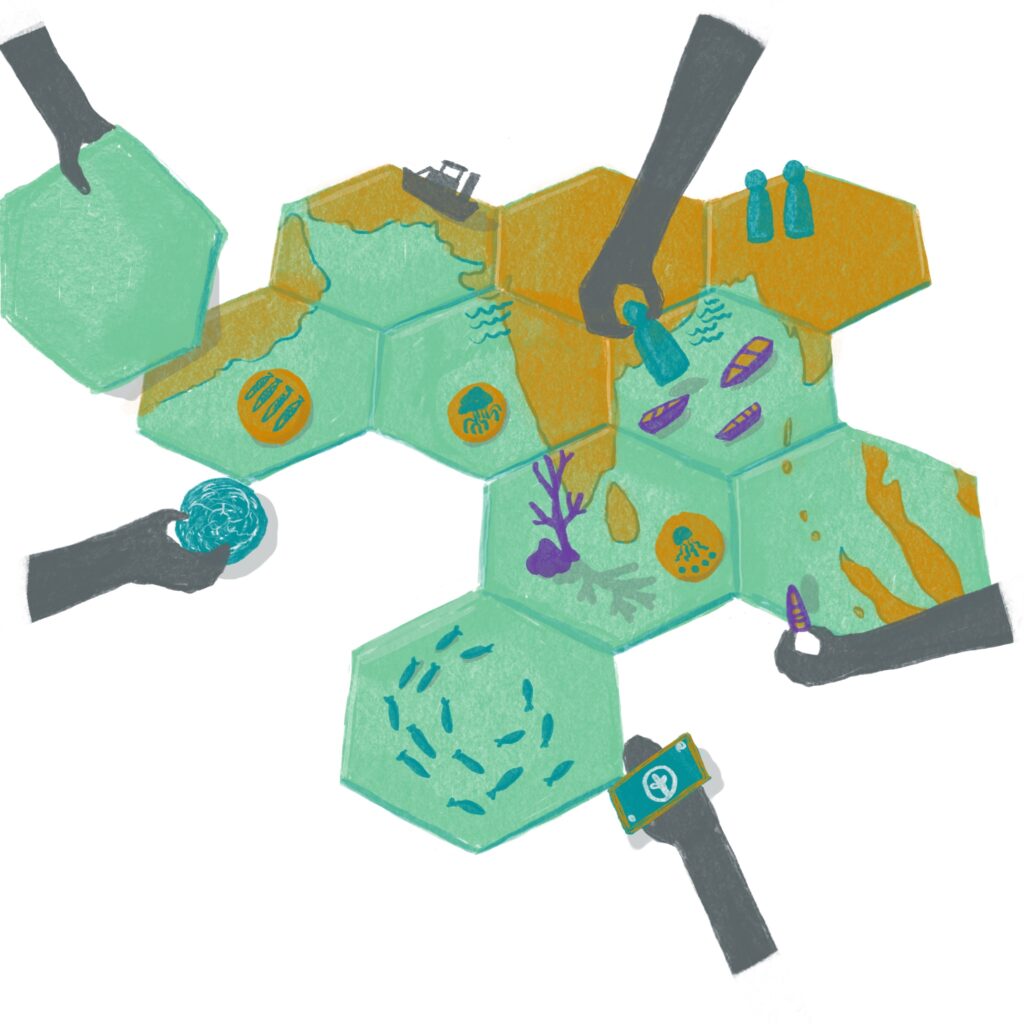A note on Caryota urens in South India
Different human cultures have their own ways of conserving plant and animal species—sometimes this is in the form of tiny sacred groves, and other times it could include entire hillsides. In Central India, individual plant species figure in the first fruit ceremonies of the adivasi (indigenous) communities. During certain periods of the year, their fruits, flowers, leaves or seeds are not collected or consumed. This allows those species to rest for a few weeks or months during crucial periods for their growth or regeneration.
The norms around these practices or methods are often embedded within the cultural-religious traditions of communities. As a knowledge system being transferred between generations, seldom are they explained or discussed in terms of ecology or conservation. This may be a reason why, when things go wrong (overharvest, collection of immature seeds), there is no mechanism within the tradition that can set matters straight. This is especially true of species that are not much used within the culture, and hence have not received any particular attention, and whose slipping away from the collective forest or local flora goes unnoticed. A good example of such a species is ‘menda’ or Litsea sebifera, whose bark was harvested in great quantities for making incense sticks. Much of the Central Indian forests are now characterised by an absence of this species. Other such species that are extracted solely for commercial purposes, and outside of traditional norms, include ‘baibidang’ (Embelia ribes), ‘sarpagandha’ (Rauwolfia sepentina), and ‘guduchi’ (Tinosporia cordifolia).
The more common absences (or minimal presence) in forest settings are timber species—rosewood, ebony, mahogany, red sanders, haldu, cedar—which have over the years been smuggled out for their value in furniture and construction. The only way to keep these species from declining in numbers is to cultivate them in private homesteads as well as in plantations. The official authority in charge of many of these species—and responsible for prohibiting their felling and transport—is the Forest Department.
THE CASE OF CARYOTA URENS
The fishtail palm Caryota urens (‘kundapanai’ or ‘kunja- panai’ in Tamil and ‘salopa’ in Odia) may soon be added to our list of endangered species in India, especially in Tamil Nadu. Caryota is a genus of tall palms with a few broad, bipinnate leaves. There are ten species which are distributed from India to Australia. The name Caryota comes from the Greek karyota, ‘date-shaped nut’, and urens refers to the stinging, needle like crystals in the outer covering of the fruit. The kundapanai, C. urens, can grow more than 15 m tall but is usually between 10–12 m high. The trunk is slightly ringed and the leaves start at a height of 5–7 m.
In Tamil Nadu, especially in the districts of Theni, Madurai, Palani, and Dindigul, the tree is used in decorative ‘pandals’—makeshift venues erected for events. The entire flowering stalk, usually with the long string of immature seeds, is lopped off the tree and then hung at the entrance of wedding halls, temples, venues where political speeches are given, house-warming ceremonies, and so on. These decorations, especially for events and ceremonies in temples, is a norm strictly followed. The devotees of a temple may go to great lengths to find and procure the required materials, especially the kundapanai stalks. Once the event is over, these stalks are simply discarded.

For a few months after March, when the temple festivities begin, marauding gangs come to harvest stalks of the fishtail palm, and often the fronds too, going about their business with a righteous air. They enter private lands and estates as well as protected forests, with equal impunity and take what they can. Their announcement that they are taking the flowering stalks to decorate such-and-such a temple is expected to prevent any dissent or disagreement. Most of these gangs come prepared with pickup trucks to load the stalks in, accompanied by about 15–20 men on motorcycles, with ropes and machetes. No checkposts or authorities dare to stop them.
Through the spring and summer months, such gangs come regularly into the hills and forested regions of these districts, leaving mutilated palm trunks in their wake. Many of these people have now become traders in palm stalks with no religious intention to decorate any temple—they cater only to the demand.
With the large number of temples in Tamil Nadu (79,154 according to a recent survey), it is not surprising that there is a constant demand for palm fronds and stalks. Add to this the large number of unsurveyed temples and private events that demand their share of ‘pandals’, and one gets an idea of how vulnerable the fishtail palm is likely to become.
In the Central Indian context (Chhattisgarh, Madhya Pradesh, Odisha, Jharkhand), the flowering stalk of the palm is tapped for toddy. In some places the toddy is then converted to jaggery (a coarse dark brown sugar), a litre of toddy yielding about 125 mg of jaggery. Here too, the tapping destroys or prevents the formation of new seeds, leading to a dearth of mature seeds that will regenerate and grow into new plants. However, among these communities there is a consciousness that unless there are new palm trees the overall flow of their beloved toddy will come to a stop! This makes people spare a flowering stalk or two just for seed, and there is a desire to nurture palms in their backyards and homesteads. Owning, trading and tapping toddy palms is a matter of pride within the community. Such an attachment to the species ensures that the palm is in safe hands, despite the detrimental usage.

LOOKING AHEAD
There are no attempts to grow the palm in Tamil Nadu as they do in Central India. Moreover, there is little or no knowledge about seed collection or the time and conditions required for the seeds to germinate. Discussions with the people who come to harvest the flowering stalks reveal that most of them have not even seen the seed or sapling. There are no efforts by the government or private nurseries to cultivate these palms at a large scale: all the flowering stalks harvested necessarily come from the wild. Elephants are also known to relish the leaves of the toddy palm, and occasionally elephant keepers come to the hills looking for this particular fodder.
Caryota seeds have a long viability and can tolerate the vagaries of both soil and weather. Even under controlled conditions they take about six to 12 weeks to germinate, as compared to naturally dispersed seeds, which can take up to six months. The fruits are consumed by monkeys and civets. Seeds found in their droppings germinate well. Though the long seed viability is an excellent strategy for survival in the wild, there is little one can do if flowering stalks are lopped off before the seeds mature, due to cultural-religious reasons.
The decline of the fishtail palm is mainly due to a cultural-religious custom and more difficult to stop or correct than if it was a blatantly commercial phenomenon. Moreover, a recent conversation with members of SEEDs Trust, an NGO working in Tamil Nadu, revealed that in some villages in the Natham Block of Dindigul district, people are engaged in felling specific trees–’atthi’ (Ficus glomerata), ‘ala’ (Ficus benghalensis), ‘arasu’ (Ficus religiosa), ‘illipe’ (Madhuca indica), ‘naval’ (Syzigium cumini), and a few others— and then chopping the trees into little bits. These bits are dried, mixed, and packed into bags of specific quantities, before being smuggled out. Such wood is apparently used in the performance of Vedic ‘homam’ rituals, which involve a ceremony around a fire that uses such wood species.
It is necessary that the concerned authorities deliberate on the new cultural trends that are detrimental to plant species. Biologists can flag these issues, but it requires leaders and officials from other sectors and departments to stem the losses to our natural resources. There is a real danger of more and more species being included in the so-called cultural-religious “traditions” of a people and slipping out of any rational intervention to save them.

Further Reading
Ramnath, M. 2003. Tropical deciduous forests and the
adivasi: Indigenous traditions as response to leaf fall in
Bastar, India. Natural Science Forum 27: 304–309.
Coombes, A. J. 1992. The Hamlyn Guide to Plant Names.
UK: Reed International Books.
Haines, H. H. 1993. The forest flora of Chota Nagpur.
Dehradun: Bishen Singh Mahendrapal Singh.






